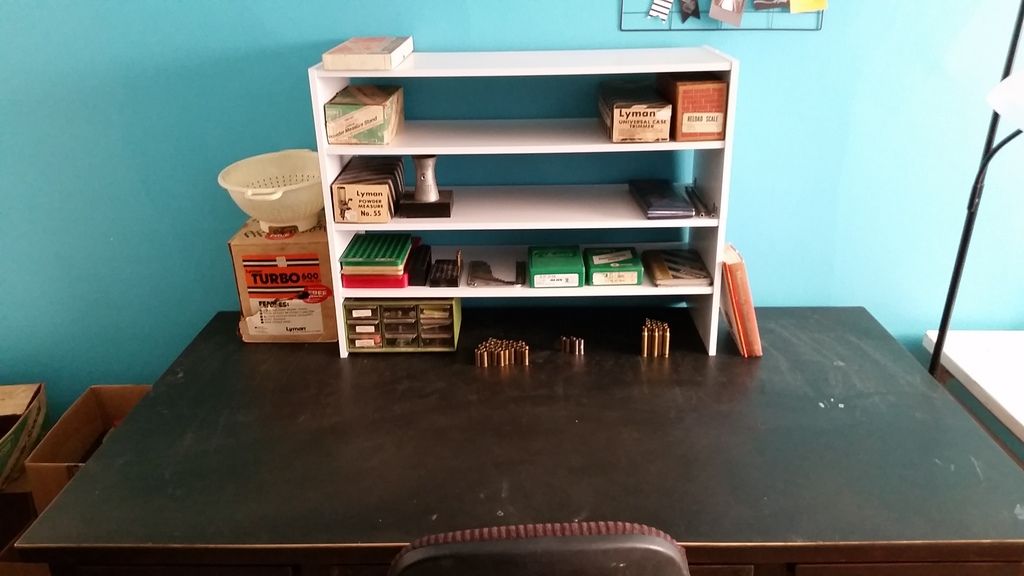TheBig1, some things to think about
*swing the press around to the side, this way you will probably be able to use the top 2 drawers on the right
*lights, you can't have enough good light


hard to describe How much very bright WHITE light is put out by this fixture, no kidding
*I like to stand up and reload, maybe sit on a tall stool.
good bench top height is 30-31"
Put cinder blocks under the legs to an approximate height you like
*use cinder blocks on top of the desk and put 12" shelf on each, a cinder block is approximately 14 long, use the thinner cinder blocks for the top, wide ones on their sides for the legs on the bottom. This is kinda crude, but you can get it done cheaply and quickly. All kinds of options are open if you have carpenter tools and skills.
*create two shelves under the desk with cinder blocks
*mount your powder scale at eye level, with the powder measure 2' to the left of the powder scale
I have made these observations with guys that I have helped over the years
*don't drink and reload at the same time, the more alcohol you consume, the more powder you like to put in a load
*don't drink beer and reload with friends over, recipe for disaster
*write down everything, you will probably remember nothing later on. It is very important to have a note book and write down your loads, and your thoughts of what may have been going on as you shoot at the range. Your failures will be as important as your successes.
*I use large index cards to write my loads down on, write my notes, thoughts, and "try next" on the back of the cards, staple, glue these in your note book. Targets that fit in a note book with notes wrote on the targets will increase their learning exponentially. Over time, these targets and notes may help diagnose a bedding or scope issue.
*double check your cases in the reloading block to make sure they all have powder
*I opt to not use any powder that I can double charge a case with
*only have one can of powder on your bench top at a time, the one that you are weighing charges with
*as you de burr and chamfer cases, small chards of brass shavings will be on the floor. If you do not want these little curls of brass getting in your feet or your children's feet, preform this task well over your bench top, and clean up immediately when finished. A 2" paint brush is great to hang around along with a parts cleaning brush to keep bench top clean. I hang these on the side of the shelving with eye hooks
*RCBS presses get primers all over the floor when cases are de-primed and primed with that priming tool on the press. Things get real exciting when your wife vacuums up large rifle and pistol primers in the vacuum. Better sweep or vacuum up those yourself. Tell her to not throw this floor sweeping in the fire place.
*You will need a bucket or can to throw culls or damaged shells in. I would not put these in the trash where the trash man could have a primer or shell go off while compressing the trash in the trash truck. You can dismantle the shells at one point, don't drink beer when you are doing this, either.
*It will be very important for you to get an OGIVE gauge(Davidson or Hornady), calipers, and you will want a cheap micrometer eventually.
*along with a good reloading area, you will want a good cleaning station for your rifles, and an organized area to clean your rifles. Reloading usually means you will be shooting more, a rifle caddy helps.
Good luck!









